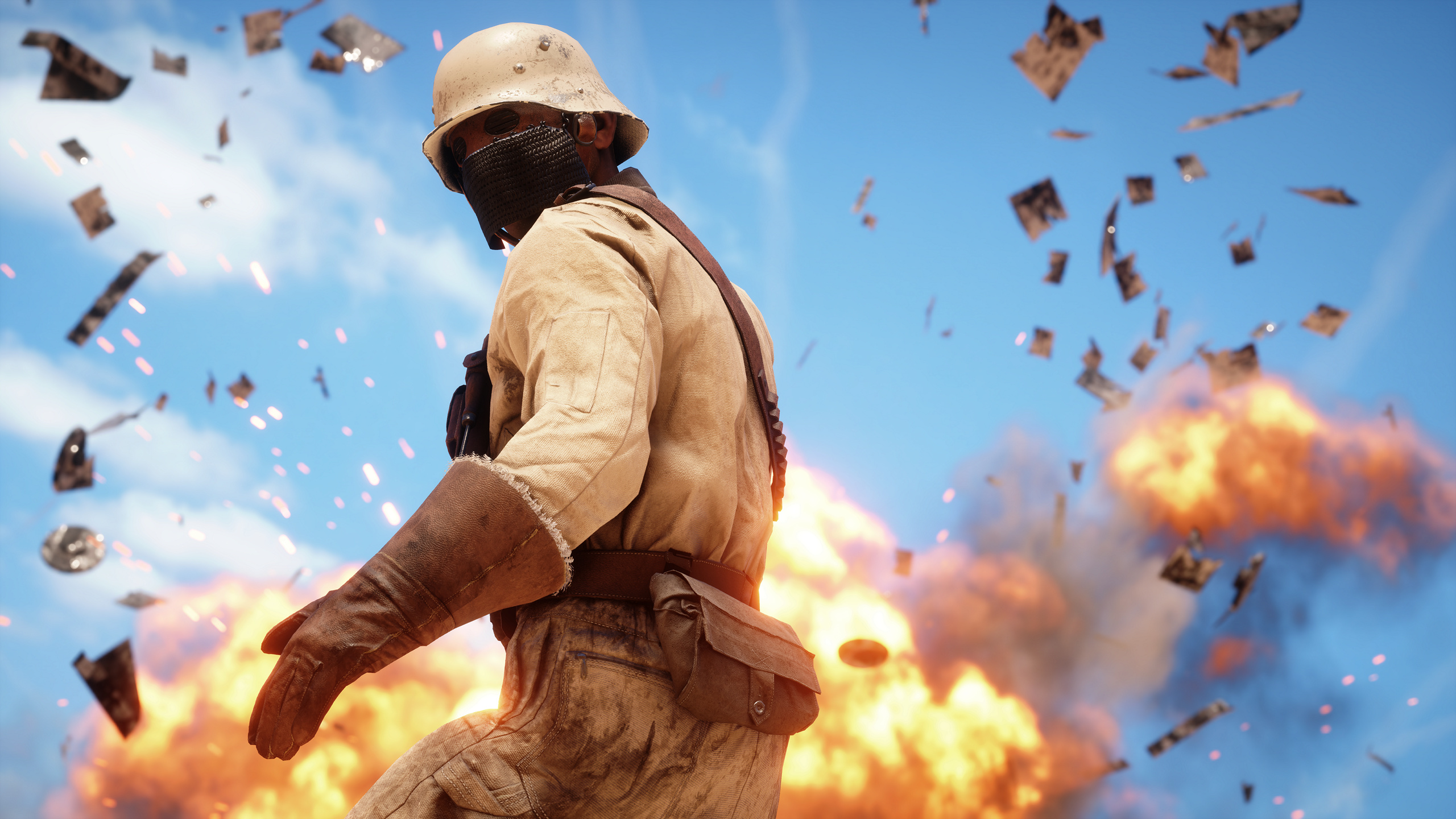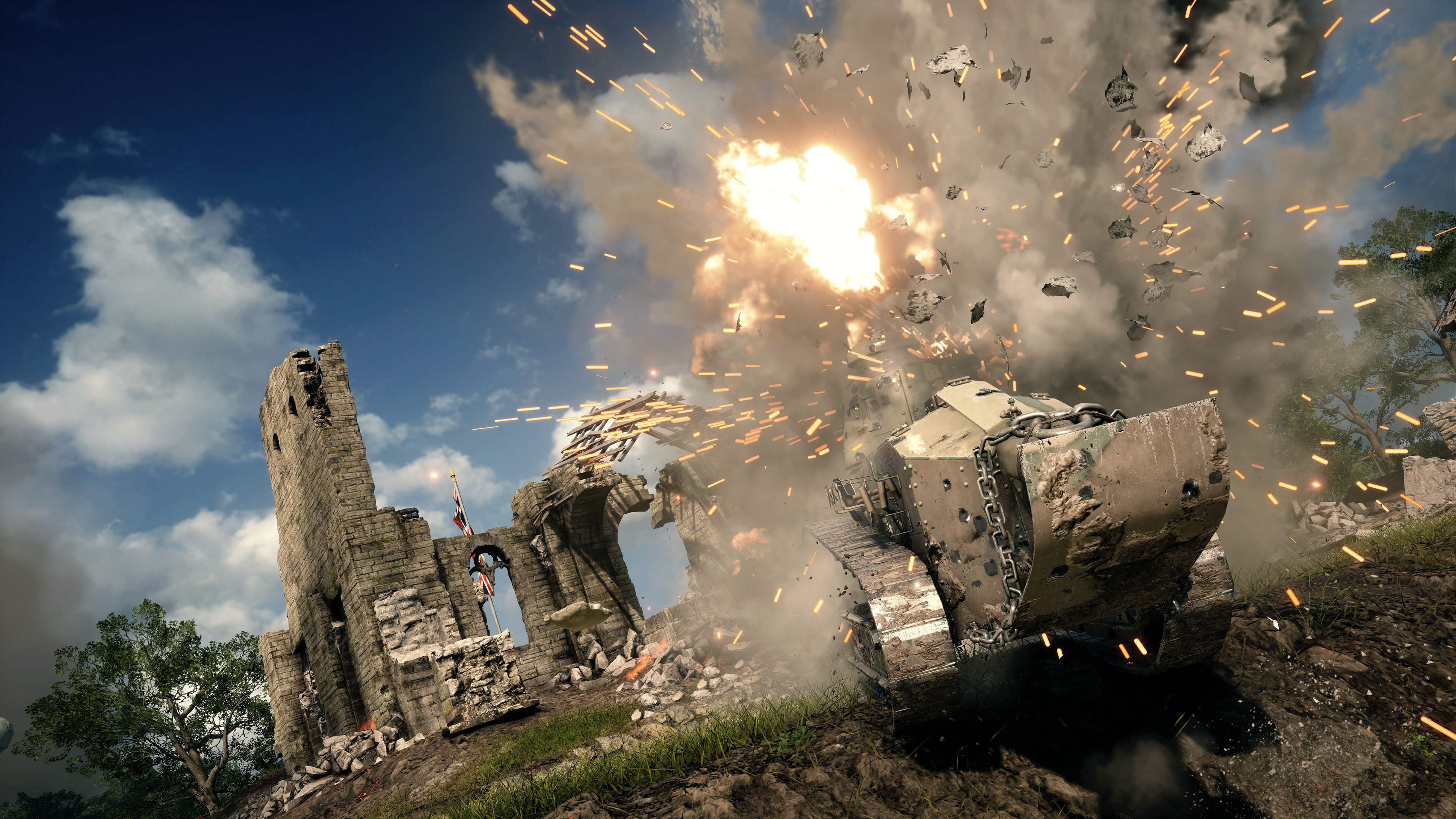- This topic has 0 replies, 1 voice, and was last updated 8 years, 7 months ago by
 Powerbits.
Powerbits.
- You must be logged in to reply to this topic.
Battlefield 1 is, amazingly, the fifteenth installment of EA DICE’s successful Battlefield franchise. As the franchise has grown, so has the complexity of the game sound. Each release expands on the accomplishments of the one before it. Battlefield 1’s sound features an impressive collection of weapons, a wide assortment of transportation options from horses to armored trains, and variable weather events. Battlefield 1 even offers Dolby Atmos playback for PC gamers.
Orchestrating this epic audio undertaking is Bence Pajor, the audio director on Battlefield 1. He’s joined by Lead Sound Designers Andreas Almström and Mari Saastamoinen Minto. And because it really does take an army to make a AAA war game of this caliber, the DICE sound team was also supported by outside studios like Pole Position Production, and other contracted game audio pros, such as the team at Criterion Games in the UK. Here, Pajor, Almström, and Minto discuss just what it took to create the complex, realistic, and emotive sound of Battlefield 1.

Bence Pajor (BP) – The leap from mono to stereo. The first huge step was moving away from the Battlefield 2 and Battlefield 2142 game engine, where all sounds were mono except for the first-person weapon sounds. For Battlefield: Bad Company in the Frostbite engine where we started using stereo sounds for all bigger and energetic events like weapons and explosions. Stereo feels so real because most of us have two ears and our brain is used to real stereo.
We also wanted to have a much more dynamic mix. We wanted it to feel more like film or reality where loudness and energy of sounds have a perceived effect on other sounds. We wanted to make better use of the fairly small dynamic range a couple of speakers offer when portraying an extremely dynamic event like war – ranging from a falling leaf to an atomic bomb. The big problem being, how can you make the sound of the leaf quiet enough to still make the sound of the bomb feel hugely loud, while still being able to enjoy the calm sound of a falling leaf?

We were really keen to play fewer sounds simultaneously than before, making the mix clearer. Since we were making a war game, loudness was the most obvious parameter to choose.
So a loud sound is going to affect the amplitude of a quieter sound, making it quieter there by allowing a bigger difference in amplitude between the two sounds. The effect is that you perceive the sound we have chosen to be the louder one as even louder than the actual wave form is. This way the sound of an explosion can completely cancel the sound of let’s say a tree falling over. One sound instead of two. Or even one sound instead of twenty in a given moment. Basically, more clarity in the mix.
Another big leap for us was when our technology allowed us to crossfade between different content depending on distance. Before, we had modeled the distance to a sound with filters. Now we can record the same event from several distances and just crossfade between them.
We started recording these events not only from varying distances but also in different environments. A gun shot or an automatic rifle sounds very different when fired in a forest, in a concrete room, or out in an open field. This in turn together with memory constraints led us to the next level of making guns and explosions.
When we still had to support the last generation of consoles and produce a huge game like Battlefield 3 we had very little runtime memory for sounds. It was impossible to fit the sounds of the all weapons and explosions – recorded at several distances and in different environments, in memory.
So, we started looking at what aspects are shared and what aspects are unique for weapons and explosions. They all go boom in one way or another. But there are different calibers, different mechanics, and various rates of fire but these are still shared across many weapons. In the end, our list of shared and unique sounds needed was a lot shorter than the amount of different guns and explosions we had to make. We built something resembling gun and explosion-synthesizers, except they didn’t use synthesis.
The source material we record or use always needs to have a natural life and energy
They used real recordings, chopped up in common and unique samples that we put together in the Frostbite engine. We could build a lot of guns using a few sounds. And since they were put together from a lot of pieces always moving depending on distance, environment, angle and rate of fire, they never sounded like a looped sample of a gun.
One thing though that is crucial is that the source material we record or use always needs to have a natural life and energy that sort of propels and gives motion and direction to the sounds. For us it is impossible to make good immersive audio with static or “dead†recordings no matter what tech we have at hand. Everything needs to move all the time so the listener can’t get a grip or see through the illusion.
Mari Saastamoinen Minto (MSM) – From a level audio point of view, namely the ambient effects, we have really honed our process which really came to the forefront with the Bad Company titles through to Battlefield 3 and Battlefield 4 and taken us to where we are today with Battlefield 1.
We’ve explored dense jungles, snowy mountains, and dry deserts, to crumbled cities hit by earthquakes in the Middle East. We’ve visited cities like Shanghai, Paris, and Baku, and we have been plunged into typhoons, EMP blasts, and aboard carriers being torn apart. The level audio in Battlefield is an everlasting challenge that constantly changes, and as sound designers we need to really nail those soundscapes so the players feel immersed and also believe in the worlds we are building. With Battlefield: Bad Company 2 we really went for it, moving the large ambiences into surround content. Changing the ambient sounds and varying them depending on how the environment changes around you also works really well. You go from a field to a village to a forest to the beach to the open sea.
Unique content for each area caters for constant change in the soundscape, keeping the level audio interesting. For Battlefield 1 all previous knowledge has now been put together and adapted to cater to the world of this game.

The most important thing is that you as a player should be able to close your eyes and feel you are really there — whether it be trenches, forest, desert or the French countryside at night
Dynamic Weather was added and of course gave us new challenges but the most important thing is that you as a player should be able to close your eyes and feel you are really there — whether it be trenches, forest, desert or the French countryside at night. With Dynamic Weather all content for multiplayer would have to be quadrupled if we were to go the same way as with previous Battlefield games. Here we had to be really smart with content creation and time management. Also, the first map you sound design also takes the longest. Finding the frequency range where your ambiences cooperate with guns, explosions and vehicles, carving out and cutting off mid and low end, as well as being careful with high end content so it won´t take detail out of the guns or be tiresome for the ears. Rain is always a challenge for example and finding those perfect recordings of rain that aren’t just white noise.
Source: EA/DICE